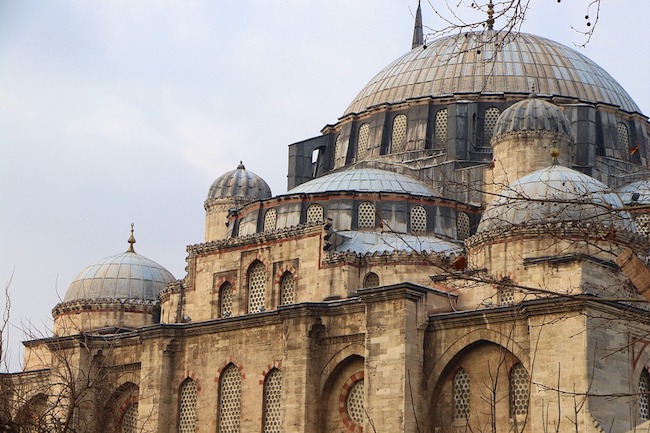Hagia Sophia’s Reversion Into A Mosque Is A Turning Point In History By Sumantra Maitra for The Federalist
While Americans behead Columbus and the British topple Rhodes, Hagia Sophia’s reconversion shows that the rest of the world still reveres national history, and it gives them strength.
In a statement that reverberated across his nation and beyond, Turkish President Recep Tayyip Erdogan announced that after more than a decade-long court battle, a court in Istanbul ordered the Hagia Sophia to be turned from a museum into a mosque once more: “With this court ruling, and with the measures we took in line with the decision, Hagia Sophia became a mosque again, after 86 years, in the way Fatih the conqueror of Istanbul had wanted it to be.”
It cannot be overstated how significant this ruling is and why it marks a new milestone in the history of the West and the world. The Turkish court’s ruling demonstrates that not only does the arc of history not necessarily move towards progress, but in some cases it actively reverses course.
Support Our Site

Now is your chance to support Gospel News Network.
We love helping others and believe that’s one of the reasons we are chosen as Ambassadors of the Kingdom, to serve God’s children. We look to the Greatest Commandment as our Powering force.
That there were no protests in Europe or the Americas over the decision reveals the hollow core of Western Christendom. Indeed, the only two countries currently protesting this move are Greece and Russia, the hearts of Orthodox Christianity.
Furthermore, the ruling exposed the fraudulent western academic theories of colonialism that neglect modern colonial powers like Turkey and China. It proves that despite the post-national musings in the West, non-westerners do not shy away from national pride — they still worshipped their history and especially their conquerors. Finally, it positions Erdogan as one of the most significant politicians of his age, as influential in reshaping Turkey and potentially the Middle East as Kemal Ataturk, the modern founder of secular Turkey.
Hagia Sophia, or Aya Sofia in classical Greek, represents the climax of Byzantine architecture in a cathedral blending Roman Catholic and Eastern Orthodox designs while ecumenical in practice. It was erected at a time Eastern and Mediterranean Europe was more powerful, unified, and, frankly, more civilized than their semi-barbaric Northern and Western European counterparts.
The conquest and fall of Constantinople in 1453 A.D. marked three significant geopolitical changes that altered the direction of history. It led to a Muslim invasion of Europe, which partially shook the Western Europeans out of their infighting, paving the way for the rise of Spain, England, and France as great colonial powers.




